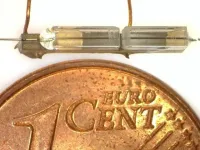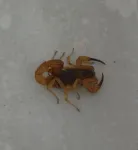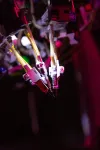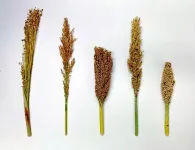Lasers create miniature robots from bubbles (video)
2021-01-21
(Press-News.org) Robots are widely used to build cars, paint airplanes and sew clothing in factories, but the assembly of microscopic components, such as those for biomedical applications, has not yet been automated. Lasers could be the solution. Now, researchers reporting in ACS Applied Materials & Interfaces have used lasers to create miniature robots from bubbles that lift, drop and manipulate small pieces into interconnected structures. Watch a video of the bubble microrobots in action here.
As manufacturing has miniaturized, objects are now being constructed that are only a few hundred micrometers long, or about the thickness of a sheet of paper. But it is hard to position such small pieces by hand. In previous studies, scientists created microscopic bubbles using light or sound to assemble 2D items. Also, in a recent experiment, microbubbles produced by lasers, focused and powerful beams of light, could rotate shapes in 3D space. Although these bubble microrobots could manipulate 2D and 3D objects, they could not connect independent components and then move them as a singular entity. So, Niandong Jiao, Lianquing Liu and colleagues wanted to build on their previous work with lasers to develop bubble microbots that can form inseparable shapes and control their movement.
The researchers created microbubbles in water by focusing a laser underneath a small part made of resin. The bubble's size was controlled by rapidly switching the laser on and off, with a higher amount of time in the "on position" resulting in larger bubbles. Then, the team made a mobile bubble robot by shifting the laser's location. Once the laser turned off, the bubbles dissolved slowly, dropping the resin in place. The team then combined multiple bubbles with different functions to produce microrobots that could lift and drop parts, move single pieces to designated positions, act as a rotational axis or push assembled objects. Unbreakable connections were made with various joints, producing three- and four-pronged gears, a snake-shaped chain and a miniature 3D vehicle. The bubble microrobots have implications for the future of manufacturing, including biological tissue engineering, the researchers say.
The authors acknowledge funding from the National Natural Science Foundation of China, the Key Research Program of Frontier Sciences of the Chinese Academy of Sciences and the CAS/SAFEA International Partnership Program for Creative Research Teams.
The abstract that accompanies this paper is available here.
The American Chemical Society (ACS) is a nonprofit organization chartered by the U.S. Congress. ACS' mission is to advance the broader chemistry enterprise and its practitioners for the benefit of Earth and its people. The Society is a global leader in providing access to chemistry-related information and research through its multiple research solutions, peer-reviewed journals, scientific conferences, eBooks and weekly news periodical Chemical & Engineering News. ACS journals are among the most cited, most trusted and most read within the scientific literature; however, ACS itself does not conduct chemical research. As a specialist in scientific information solutions (including SciFinder® and STN®), its CAS division powers global research, discovery and innovation. ACS' main offices are in Washington, D.C., and Columbus, Ohio.
To automatically receive news releases from the American Chemical Society, contact newsroom@acs.org.
Follow us: Twitter | Facebook
INFORMATION:
[Attachments] See images for this press release:
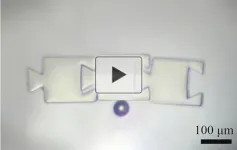
ELSE PRESS RELEASES FROM THIS DATE:
2021-01-21
HOUSTON - (Jan. 20, 2021) - Once upon a time, seasons in Gale Crater probably felt something like those in Iceland. But nobody was there to bundle up more than 3 billion years ago.
The ancient Martian crater is the focus of a study by Rice University scientists comparing data from the Curiosity rover to places on Earth where similar geologic formations have experienced weathering in different climates.
Iceland's basaltic terrain and cool weather, with temperatures typically less than 38 degrees Fahrenheit, turned out to be the closest analog to ancient Mars. The study determined that temperature had the biggest impact on how rocks formed from sediment ...
2021-01-21
Since SARS-CoV-2 was identified in December 2019, researchers have worked feverishly to study the novel coronavirus. Although much knowledge has been gained, scientists still have a lot to learn about how SARS-CoV-2 interacts with the human body, and how the immune system fights it. Now, researchers reporting in ACS Pharmacology & Translational Science have developed a mathematical model of SARS-CoV-2 infection that reveals a key role for the innate immune system in controlling viral load.
The COVID-19 pandemic has created tremendous socioeconomic problems and caused the death of almost 2 million people worldwide. Although vaccines ...
2021-01-21
Scientists at the University of Bonn have built hair-thin optical fibre filters in a very simple way. They are not only extremely compact and stable, but also colour-tunable. This means they can be used in quantum technology and as sensors for temperature or for detecting atmospheric gases. The results have been published in the journal Optics Express.
Optical fibers not much thicker than a human hair today not only constitute the backbone of our world-wide information exchange. They are also the basis for building extremely compact and robust sensors with very high sensitivity for temperature, chemical analysis and much more.
Optical resonators or filters are important components cutting out very narrow spectral lines from white light sources. In the simplest case such filters ...
2021-01-21
Tityus serrulatus, the Yellow scorpion, causes more deaths than any other venomous animal in Brazil. Its sting can induce heart attack and pulmonary edema, especially in children and the elderly. According to the Brazilian Health Ministry, more than 156,000 cases of scorpion envenomation, 169 fatal, were reported in the country in 2019.
Researchers at the University of São Paulo (USP) have demonstrated for the first time that in severe cases of scorpion envenomation a systemic neuroimmune reaction produces inflammatory mediators leading to the release of neurotransmitters. A paper reporting the results of their study is published
in Nature Communications. It suggests the inflammatory process can be inhibited by administration of a corticosteroid almost immediately after the ...
2021-01-21
Skoltech researchers and their collaborators from France, the US, Switzerland, and Australia were able to create and describe a mixed oxide Na(Li1/3Mn2/3)O2 that holds promise as a cathode material for sodium-ion batteries, which can take one day complement or even replace lithium-ion batteries. The paper was published in the journal Nature Materials.
Lithium-ion batteries are powering the modern world of consumer devices and driving a revolution in electric transportation. But since lithium is rather rare and challenging to extract from an environmental standpoint, researchers and engineers have been looking for more sustainable and cost-effective alternatives for quite some time now.
One option is sodium-ion technology, as sodium is much more abundant than ...
2021-01-21
Researchers Yulia Chilipenok, Olga Gaponova, Nadezhda Gaponova and Lyubov Danilova of HSE - Nizhny Novgorod looked at how the lockdown has impacted Russian women during the COVID-19 pandemic. They studied the following questions: how women divided their time; how they worked from home; how they got on with their partners and children; and how they dropped old habits and started new ones in relation to nutrition, health, beauty, and self-development. In cases in which the whole family had to stay home together for a long time, it was largely women on whom the family's adaptation to the new reality depended. The paper was published in the Woman in Russian Society Journal.
It is difficult to find a strictly academic definition for today's 'self-isolation'. According to the ...
2021-01-21
A new study from researchers at the Allen Institute collected and analyzed the largest single dataset of neurons' electrical activity to glean principles of how we perceive the visual world around us. The study, published Wednesday in the journal Nature, captures the hundreds of split-second electrical signals that fire when an animal is interpreting what it sees.
Your brain processes the world around you nearly instantaneously, but there are numerous lightning-fast steps between light hitting your retinas and the point at which you become aware of what's in front of you. Humans have three dozen different brain areas responsible for understanding the visual world, and scientists still don't ...
2021-01-21
Various software packages can be used to evaluate products and predict failure; however, these packages are extremely computationally intensive and take a significant amount of time to produce a solution. Quicker solutions mean less accurate results.
To combat this issue, a team of Penn State researchers studied the use of machine learning and image colorization algorithms to ease computational load, maintain accuracy, reduce time and predict strain fields for porous materials. They published their work in the Journal of Computational Materials Science with accompanying presentations and proceedings in Procedia Engineering.
"There is always a human side to design," said Chris McComb, assistant professor of engineering design in the School of Engineering Design, ...
2021-01-21
ITHACA, N.Y. - When humans first domesticated maize some 9,000 years ago, those early breeding efforts led to an increase in harmful mutations to the crop's genome compared to their wild relatives, which more recent modern breeding has helped to correct.
A new comparative study investigates whether the same patterns found in maize occurred in sorghum, a gluten-free grain grown for both livestock and human consumption. The researchers were surprised to find the opposite is true: Harmful mutations in sorghum landraces (early domesticated crops) actually decreased compared to their wild relatives.
The ...
2021-01-21
Harbor porpoises have rebounded in a big way off California. Their populations have recovered dramatically since the end of state set-gillnet fisheries that years ago entangled and killed them in the nearshore waters they frequent. These coastal set-gillnet fisheries are distinct from federally-managed offshore drift-gillnet fisheries. They have been prohibited in inshore state waters for more than a decade. The new research indicates that the coastal set gillnets had taken a greater toll on harbor porpoise than previously realized.
The return of harbor porpoises reflects the first documented example of the species rebounding. It's a bright spot for marine wildlife, the scientists write in a new assessment published in Marine Mammal Science.
"This is ...
LAST 30 PRESS RELEASES:
[Press-News.org] Lasers create miniature robots from bubbles (video)


